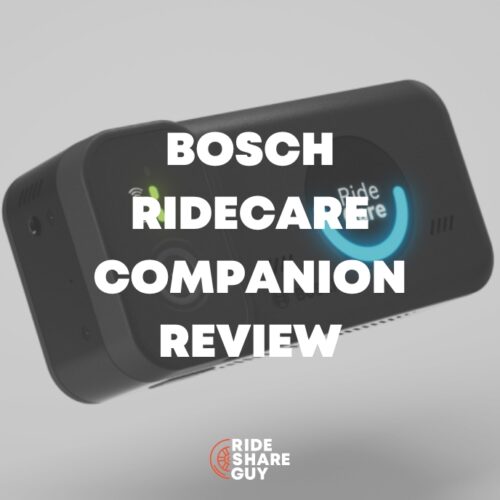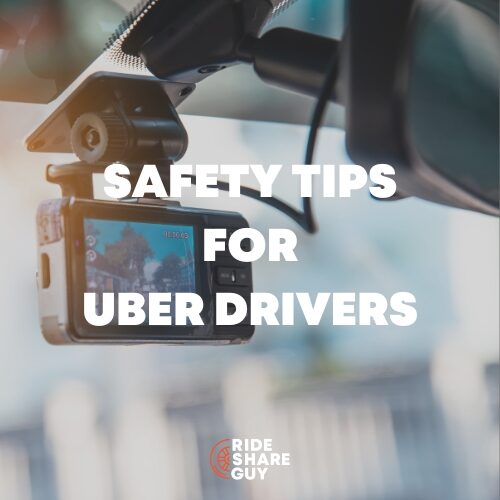When we published our article on Lyft’s partition for drivers, we received a flood of emails from drivers describing or showing off their own sneeze guards/partitions/protective barriers. Senior RSG contributor Paula Gibbins collected some of the best ones from drivers below – let us know if you’ve created a sneeze guard or if you’d copy one of these below!
Partitions, sneeze guards, protective barriers, any way to feel safer during a pandemic. Whatever you want to call them, drivers are either buying them, receiving them or making their own to protect themselves and their passengers from COVID-19.
Below, we’re sharing our favorite homemade sneeze guards by drivers around the U.S.
Related:
- The Best Masks for Rideshare Drivers: Our In-Depth Review
- Driver Barrier Review: What You Need to Know About Driver Partitions
DIY Sneeze Guard Barriers for Drivers
1. The Driver-Only PVC and Plastic Sneeze Guard
From driver Terry: “This is the setup I have that helps social distance me and the customers.”
I call it the PVC and plastic sneeze guard because that’s most of what you need to complete this work of art that effectively keeps the driver separated from the rest of the people in their vehicle.
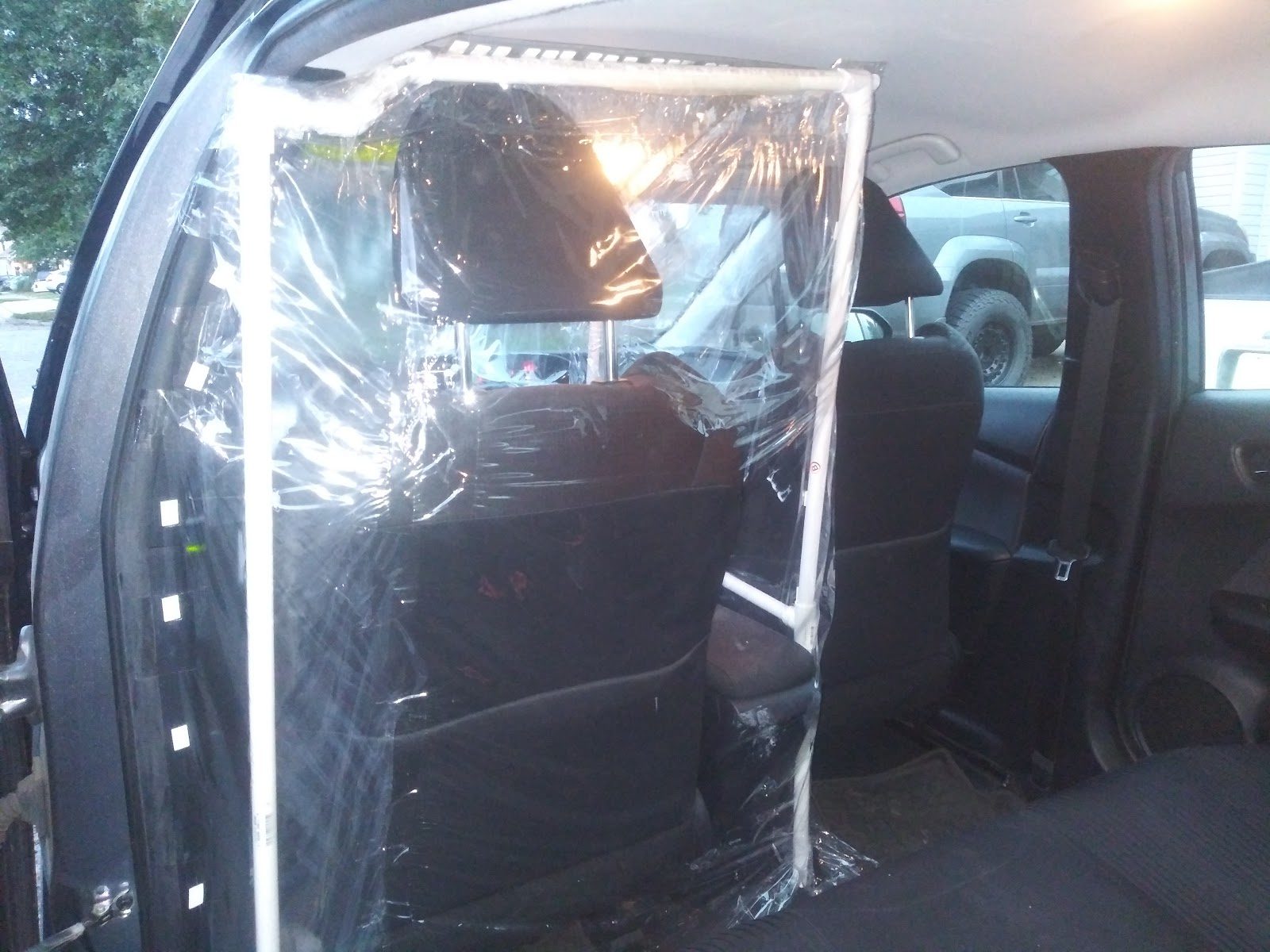 This driver took PVC pipes and wrapped plastic all around them to create a barrier between himself and his passengers. For added protection, he made sure the plastic stretched from floor to ceiling and was adhered all around for full coverage.
This driver took PVC pipes and wrapped plastic all around them to create a barrier between himself and his passengers. For added protection, he made sure the plastic stretched from floor to ceiling and was adhered all around for full coverage.
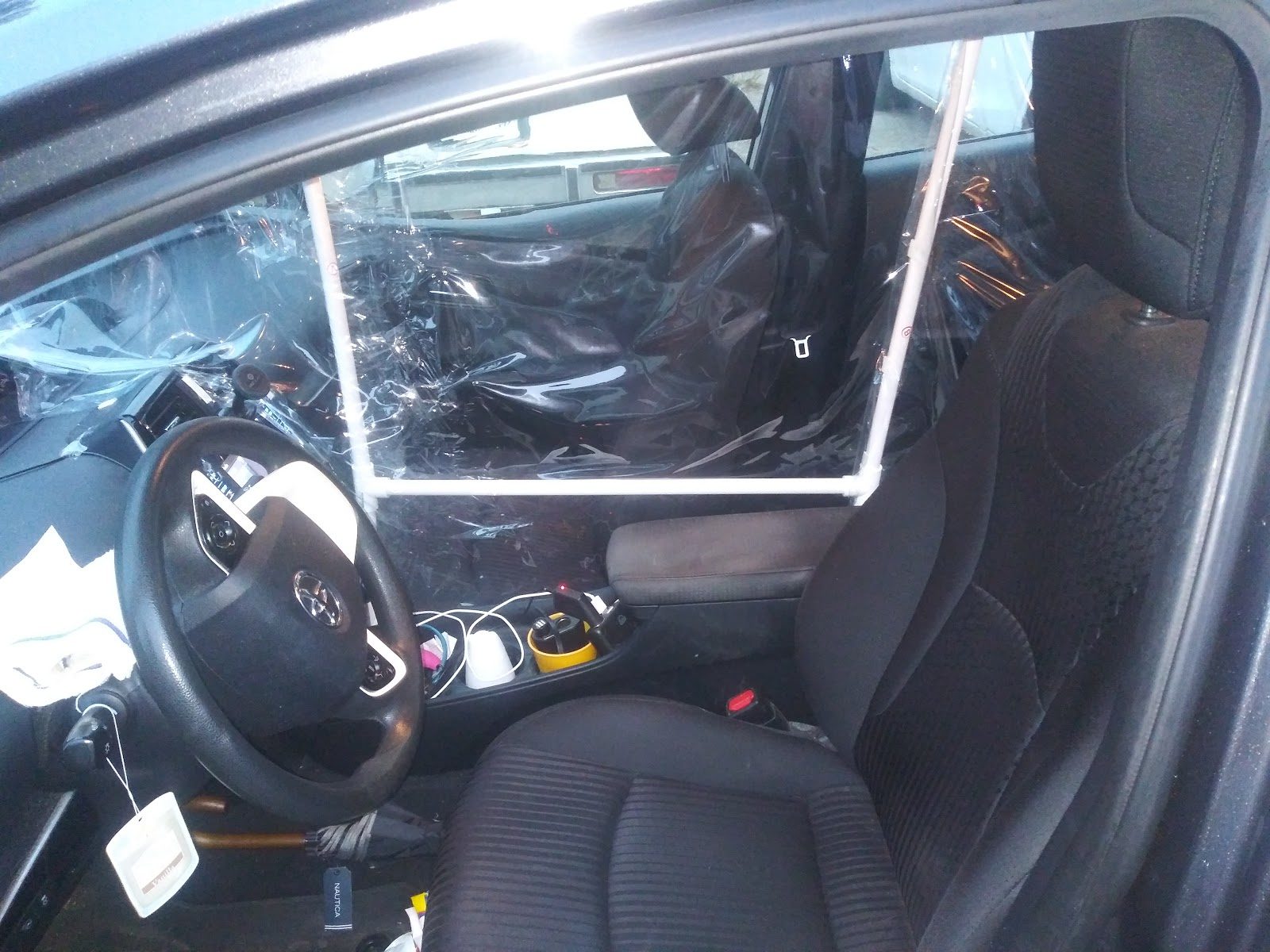 He even draped the plastic so it will go all the way along his dashboard to try to keep those little COVID-19 particles at bay.
He even draped the plastic so it will go all the way along his dashboard to try to keep those little COVID-19 particles at bay.
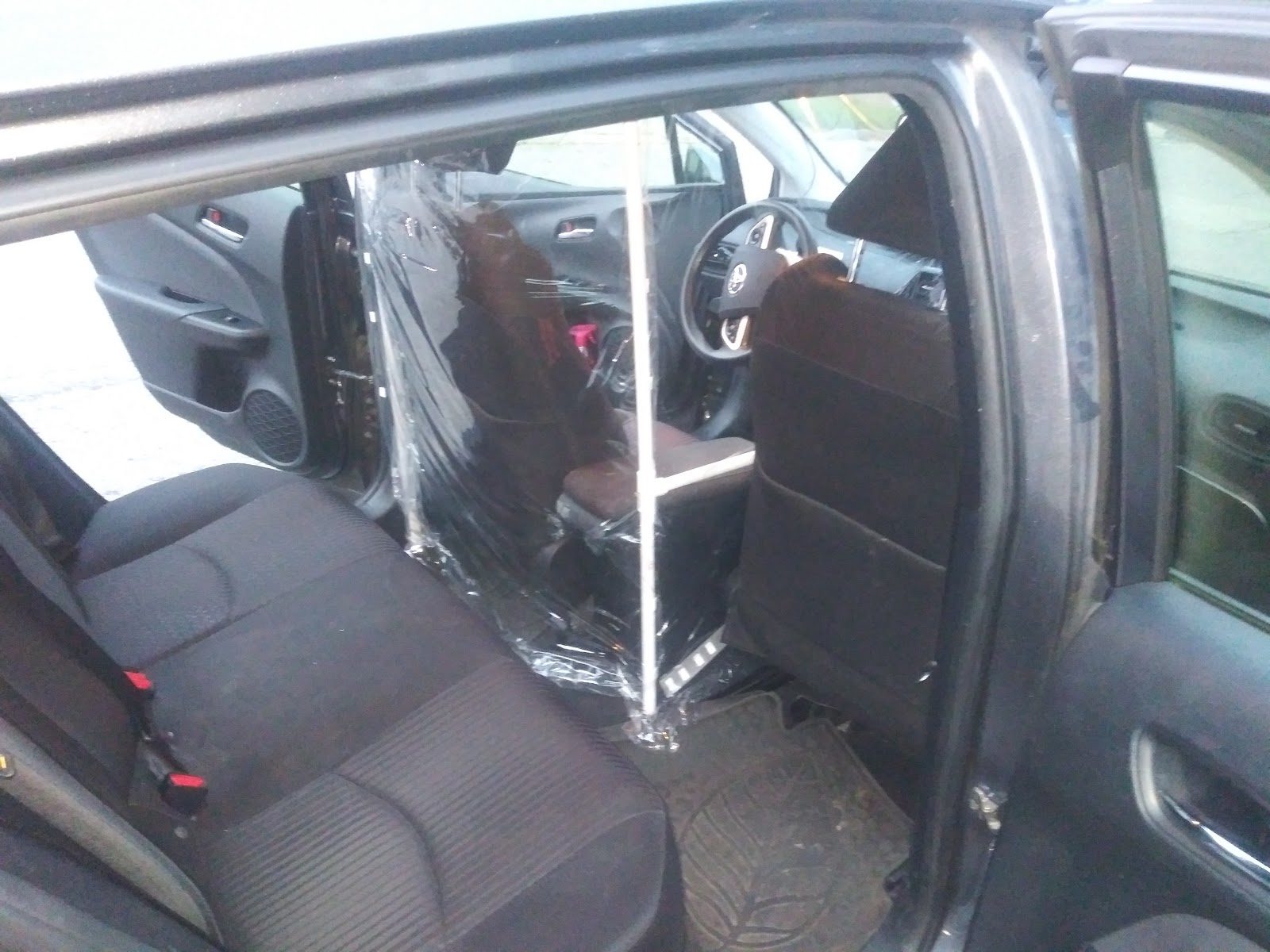 This is definitely one way to keep all of the seats open while keeping yourself protected!
This is definitely one way to keep all of the seats open while keeping yourself protected!
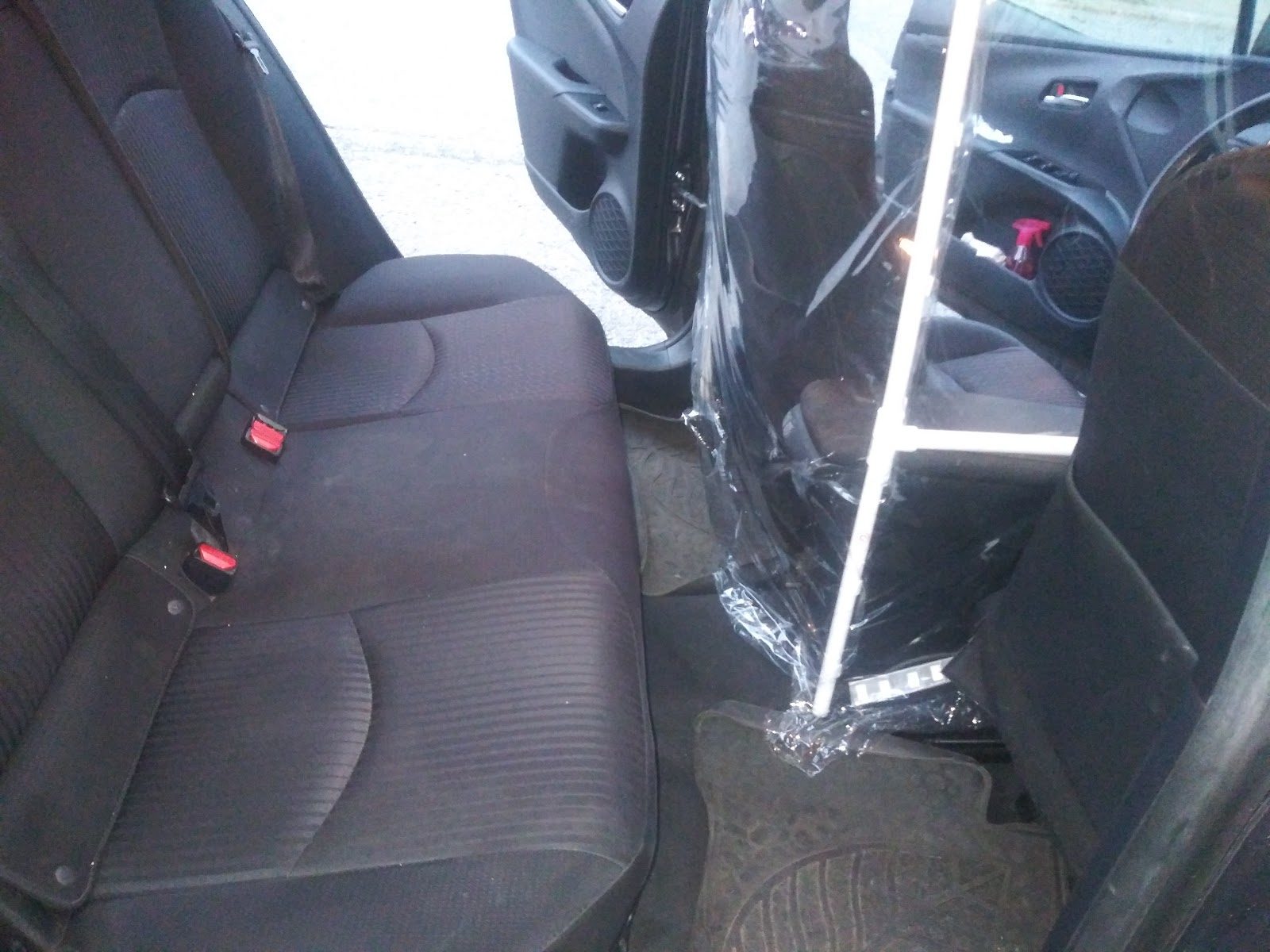 2. Velcro Tape and Plastic Sneeze Guard
2. Velcro Tape and Plastic Sneeze Guard
This one I call the velcro tape and plastic sneeze guard. With using velcro tape, it’s easy to put in and take out to suit your needs for the day.
Driver DH: “Went to JoAnn’s fabric store bought 3 yards of plastic and used Velcro tape along the edges to wrap around me and used pins for extra support. Of course you need to measure the length and do some minor sizing.
It’s the only way I drive along with my face mask. I feel safe as I can be. I’m taking advantage of the “set your own” prices before the drivers hit the road again. I’m using 1-5-2 x multiplier. When I go home I set my multiplier at 3 times and riders accept it, not all, but some. Yesterday I was doing 1-2 mile rides for 9-10.00 dollars each.. that’s great for LA!
All riders love it and feel safe, like I feel. I’m even getting more tips. Riders are very appreciative. One lady rider gave me a 1 rating (I was 4.96 but that 1 rating dropped me to 4.95) because she said I wasn’t doing enough to protect the riders and I was only protecting myself. I guess she was jealous or just was having a bad day. I keep hand sanitizers plus a note in the back seat for my riders.”
3. The Standard Plexiglass Sneeze Guard
Of course, another option is just using straight up plexiglass to form a solid barrier.
Reader Glenn: “I built my own and the cost was comparable. Mine encapsulates the driver seat and allows good airflow (A-C).
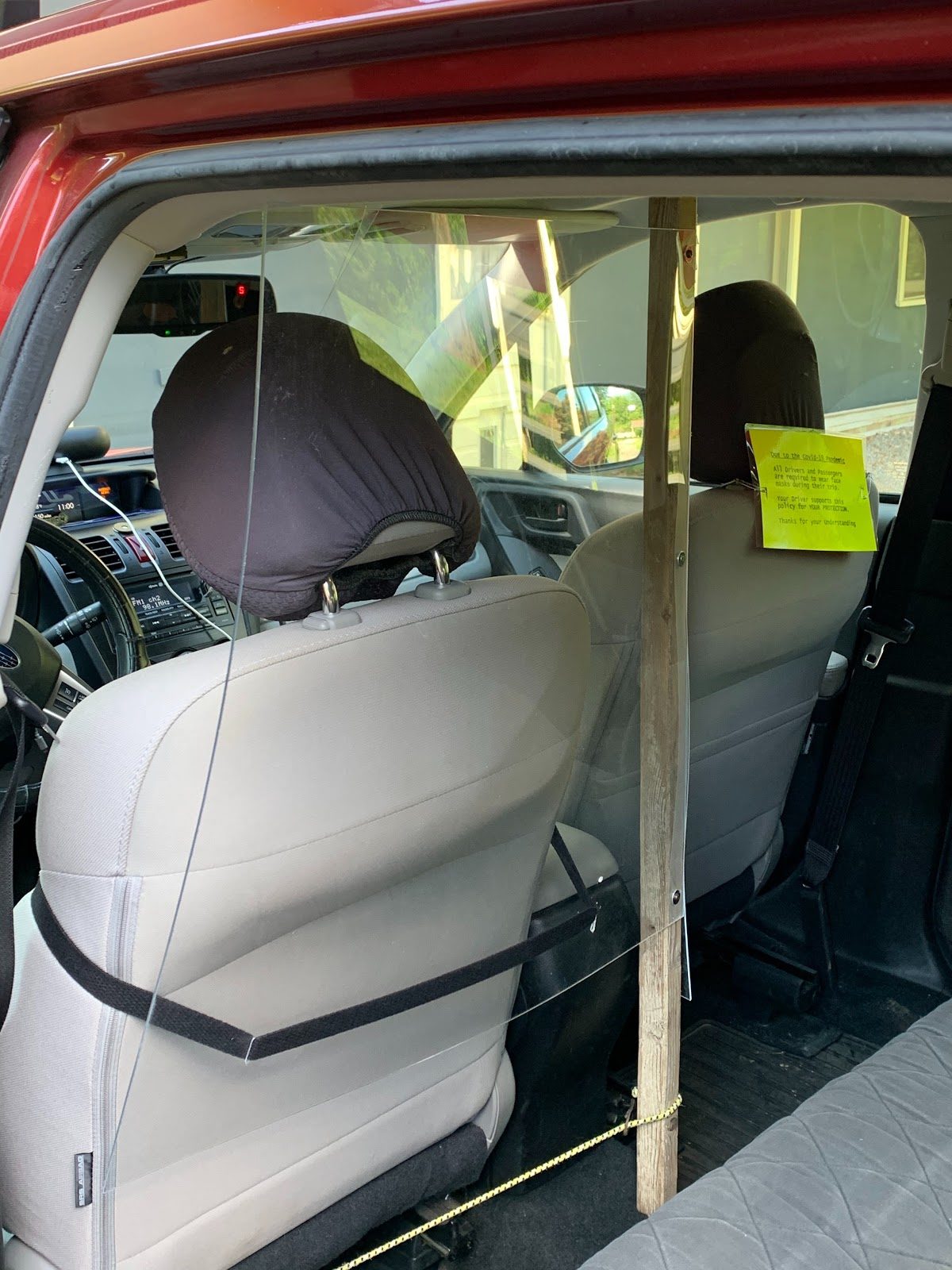 Most hardware stores sell sheets of plexiglass. Measure height beside the driver (does not have to be floor to ceiling but if it goes between seats (passenger side) it will be more stable. Width is determined by distance from dash to beyond the driver’s seat (in driving position) don’t get too close to the dashboard so you can operate all components.
Most hardware stores sell sheets of plexiglass. Measure height beside the driver (does not have to be floor to ceiling but if it goes between seats (passenger side) it will be more stable. Width is determined by distance from dash to beyond the driver’s seat (in driving position) don’t get too close to the dashboard so you can operate all components.
The plexiglass behind the driver’s seat will need two slots cut to allow a strap to be used to secure the seat. Trying to attach anywhere near the driver’s b-post will probably make closing the back door impossible.
Connecting the 2 pieces, you will need a piece of 1×2 using small wood screws w/ metal spacer to keep screws from some of the normal torque. Use appropriate wood screws and drill pilot holes with a dremel tool.
When I installed it initially I had to find anchor points for the front and the right angle corner because of the movement and flexibility of the “box” while driving.
I’m no engineer but it wasn’t that difficult. Just go slow. “Measure twice cut once”. Best to make measurements before you purchase plexiglass because it’s hard to cut. The hardware store can make the cuts for you.
According to Glenn, his driver partition has needed only a little maintenance since installing it in May.
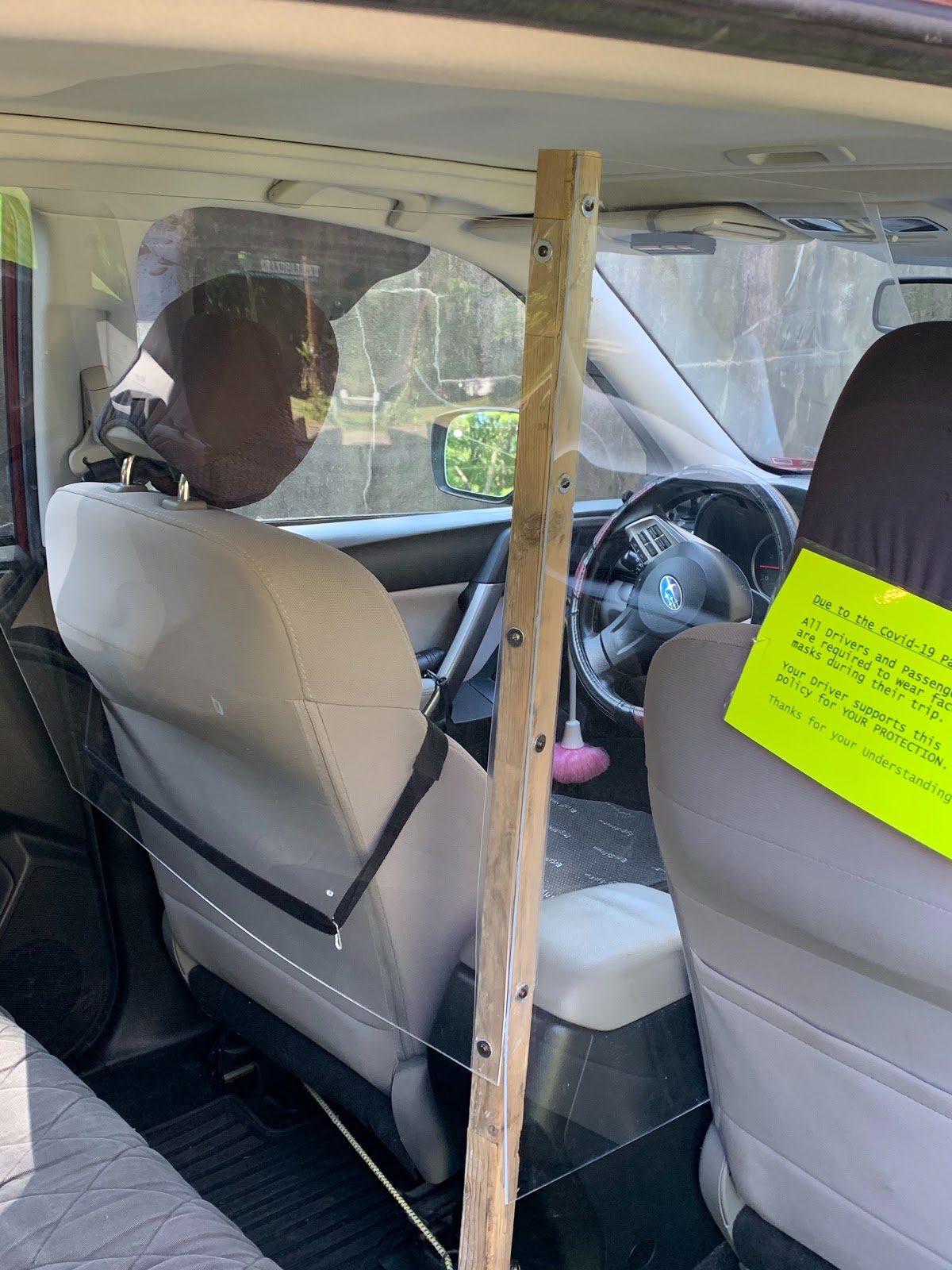 4. Even More Safety: Plexiglass and Cardboard Sneeze Guard
4. Even More Safety: Plexiglass and Cardboard Sneeze Guard
The driver pictured in the video below appears to have used plexiglass or a plastic sheet of some kind paired with cardboard in order to create his own barrier. This one stretches across the entire mid-section of the vehicle effectively cutting off the front from the back.
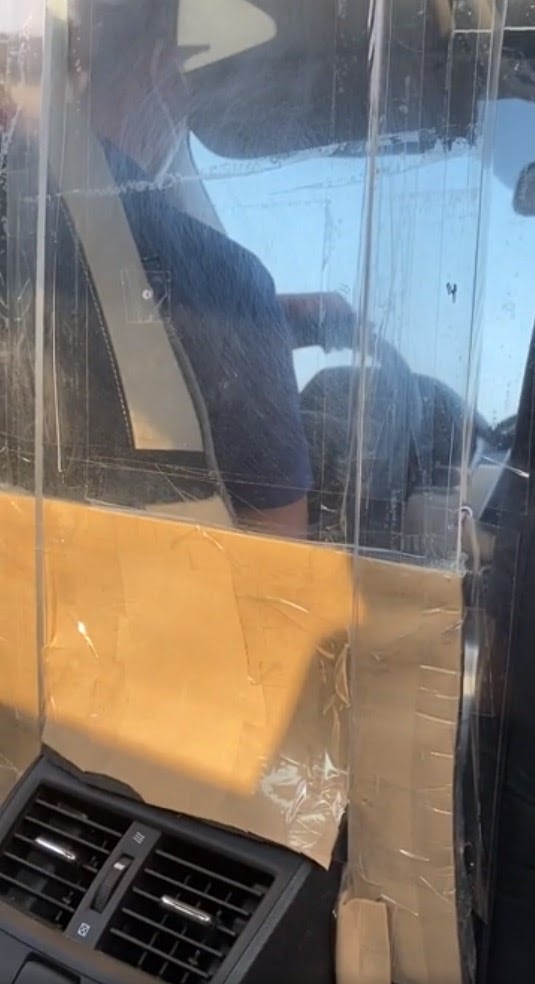
Note that the driver was nice enough to keep the air vents unblocked for their backseat passengers.
5. The ‘Don’t Use a Used One’ Shower Curtain Sneeze Guard
Last but not least, the shower curtain sneeze guard, sure to work for anyone who is on a tighter budget. I do recommend getting a new shower curtain and not just using the one from your shower.
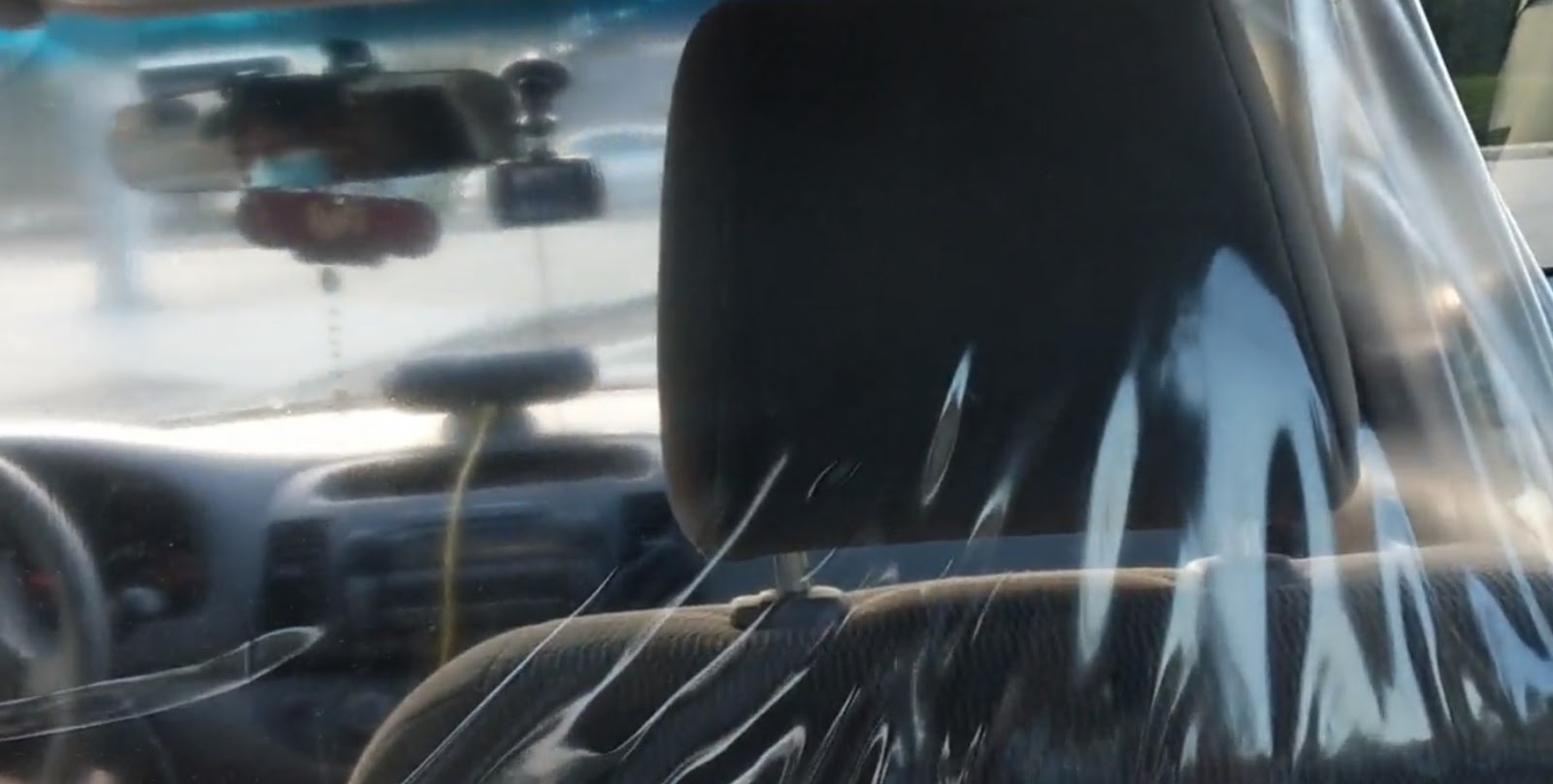
While we can’t see the bottom of the guard in the short video clip featured below, we can assume it adheres to the bottom of the vehicle in some way with Velcro, duct tape, a board it’s stapled to or many other options. The great thing about making your own is you can pick and choose the method(s) best for you and your vehicle.
Conclusion: A Variety of Ways to Stay Safe(r) With a Sneeze Guard or Protective Barrier
You don’t need to be rich in order to protect yourself and your passengers during this pandemic. You don’t even really need to be that much of a “handyman” in order to get a workable fix into your vehicle.
Any one of the options shown or described above is one fairly easy and definitely affordable option to protect yourself, in addition to wearing masks and cleaning your car with recommended driver cleaning supplies.
Do you have a barrier in your vehicle? Share your methods below!
-Paula @ RSG


